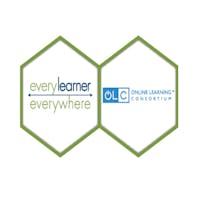In early 2017, organizations that have focused on digital learning came together to better leverage their strengths and capacities for a common goal: improving student success. Supported by foundation funding leaders in this field shaped what has now become Every Learner Everywhere, a network of accomplished individuals and organizations that work together as partners to drive increases in digital technology implementations, provide advice and training, and develop resources for the higher education community at large.
The Online Learning Consortium (OLC), one of the 12 partner organizations of Every Learner Everywhere, was charged with identifying and understanding innovations in the digital education landscape. The first goal was to create an environmental scan of the digital learning environment in higher education with a focus on adaptive technology. To accomplish this task, OLC partnered with Dr. Tanya Joosten of the University of Wisconsin-Milwaukee to lead the research project with her team at the National Research Center for Distance Education and Technological Advancements (DETA).
Joosten and her team collected data from the combination of a three-year review of Online Learning Consortium’s Digital Learning Innovation (DLI) Award submissions, plus a review of documents produced by industry leaders, national organizations advancing technology in learning, journals and peer-reviewed research, news and media sources, and prominent research centers, with a focus on post-secondary education within the US over the past 18 months.
The primary trends identified by the team were: adaptive learning, open education resources (OER), gamification and game-based learning, MOOCs, LMS and interoperability, mobile devices, and design. Secondary trends, found in only a few of the reviewed resources, included: blended learning, dashboards and learning analytics, virtual reality, and artificial intelligence. There were also a variety of “honorable mentions” as upcoming trends to keep an eye on in the next few years like STEM and online labs, digital literacy and fluency, access, and feedback to name a few.
To those working in higher education, some of the trends presented by the team may not have come as a surprise. While the trends might have been expected, there were surprises in the findings. Mainly, this research highlighted a major disconnect between the lack of published empirical research and the popularity of specific trends within the digital learning landscape. Additionally, it was discovered that mass amounts of research published on specific trends have had little development completed at scale.
Kate Lee-McCarthy, OLC, and Dr. Justin T. Dellinger, dLRN, recently sat down with Joosten to ask her about the results of the study. Joosten highlighted the lack of empirical research that the project illuminated. She mentioned that while there are many trends and expectations around technology, there is also a corresponding lack of data-driven evidence that can inform effective implementations. Why? “Because findings are not disseminated in a way that is approachable to the masses,” she explained, “a way where everyone can receive the information and help guide practice.” While peer-reviewed journals are important mechanisms to share research, she feels that scholars can also present the results of those studies in other ways to help influence practice in a more timely manner. Joosten also argued that the field should evaluate trends through subgroups of underrepresented students to promote equity.
When asked about how these concerns can be rectified, Joosten replied, “We need to move beyond just quantitative research to a mixed methodological approach so that we're gathering qualitative data that tells the story about the quantitative findings which will help us influence practice.” She continued that researchers need to better investigate the use of technology at the course, program, and institutional levels in order to understand how different structures broadly influence digital learning. In particular, she feels that “we have a very micro perspective, and we need to have a more macro perspective about how institutions work.” For example, she shared research about how the administrative home of instructional designers on a campus may promote or hinder their ability to support faculty to improve student outcomes and effectively integrate new digital tools.
As the conversation continued, Joosten discussed the importance of design in online course development, a primary finding in the scan. She suggested a checklist on ways to improve research, design, development and implementation: “It's identifying your learning objectives, thinking about how you're going to assess them, especially beyond exams and quizzes to more formative forms of assessment, and then planning out your activities. But content is not top on your list.” At the end of each course, Joosten argues for the replication of research that ties design together with student outcomes, including underrepresented subgroups as population types, to better understand how choices may impact the learners.
So what do we do with the results of this research? Joosten believes that it is critical to link technology to teaching and learning and recognize that each piece of technology is a part of much larger systems. To successfully apply any of these technologies, considerations need to be made in terms of organizational implementation and culture. Joosten remarked that an opportunity for future research can be found in “identifying institutional or organization models that will lead to the most successful implementation of technology and innovation that increases outcomes.” Delivering these models to a differentiated population of educators and learners requires an adaptive approach. Perhaps Every Learner Everywhere, with their focus on adaptive learning for student success, will be able to fill that need.
The results of the environmental scan are openly licensed and made available through the Every Learner Everywhere knowledge hub (SOLVE): Click here to download.



